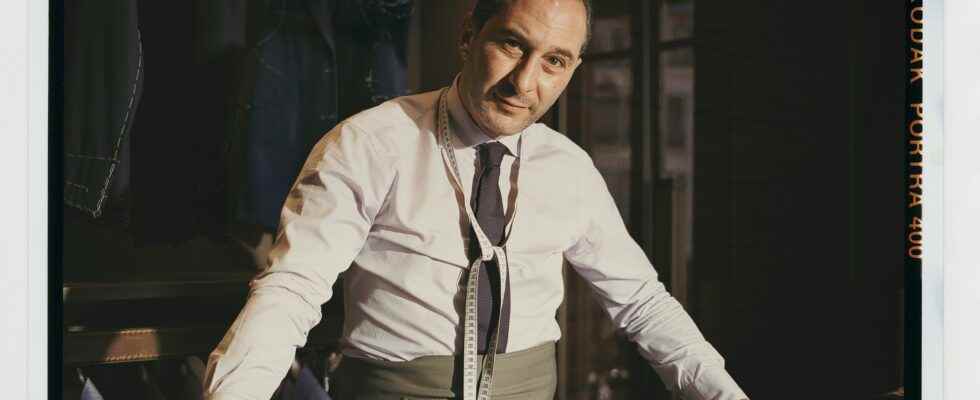With both hands on the table, his gaze powerful, Karim Rebahi stands out as the guardian of one of the temples of French haute couture costume. On the first floor of the Berluti boutique at 14, rue de Sèvres in Paris, the master tailor perpetuates the historic know-how of Arnys, the men’s fashion house taken over by the LVMH group brand in 2012. It is in this the same workshop that the activity had started in 1933. Arnys dressed the greatest there, from Miles Davis to Pablo Picasso via François Mitterrand. Its characteristic? The making of “big size” costumes, literally hand-sewn and 100% personalized.
After fifteen years at Arnys, Karim Rebahi retained the reins of the workshop at the time of the transition. It is today in a warm living room with elegant woodwork that he receives his clients. Increasingly international, the activity also leads him to travel to New York, Tokyo, Dubai, London… around twenty destinations in total for measurements, fittings and final delivery. “Each time, I start from a blank page,” he observes. During the first meeting, the master tailor guides the client in his choices. “Depending on the occasion and its way of life, I orient it on the line and the fabric.” The choice is vast. A hundred bundles of 30 to 70 fabrics are available, an average of 5000 possibilities. Loro Piana, Holland & Sherry, Piacenza, Scabal… Berluti works with the most renowned drapers.
“It’s body architecture”
Strong back, less 1.5 centimeters on the right shoulder, chest to fit… On the measurement sheet, the master tailor notes the characteristics. Measurements, shape, fabric, lining, button: every detail is then transferred to the pattern, a paper model prior to the construction of a custom-made suit. “My role is to hug the body and highlight it, explains Karim Rebahi. In ready-to-wear, the clothes are cut symmetrically, except that we all have little weaknesses: differences in shoulder height , arched back… I adapt to everyone’s morphology. It’s body architecture.”
Once this step is completed, the master tailor then builds the models: back, front, small side with the sleeves… Foundations necessary for the development of the fabric which will be used to check the balance of the garment during the first fitting. . A few adjustments and weeks later, it’s time for the second fitting. Covered with basting threads – specific to large measures – the costume is “pre-built” in order to be able to make precise adjustments. “Each time, we disassemble the suit and reassemble it,” says the craftsman. And if weight variations occur, the master tailor adapts! Behind the salon, dress makers, sleeve fitters, fitters, collar fitters, finishers and buttonhole makers are busy. Silently. Between 70 and 80 hours are thus necessary for the construction of a costume.
Twenty finished costumes come out of the workshop every day. The customer will have waited four to six months before delivery. The price ? From 7,000 euros to – rarer – 30,000 euros for a vicuña suit. Karim Rebahi’s greatest satisfaction? “When the customer leaves with a smile. I know then that the relationship of trust is established.” As for the patronage, it is preserved…until the next order.
